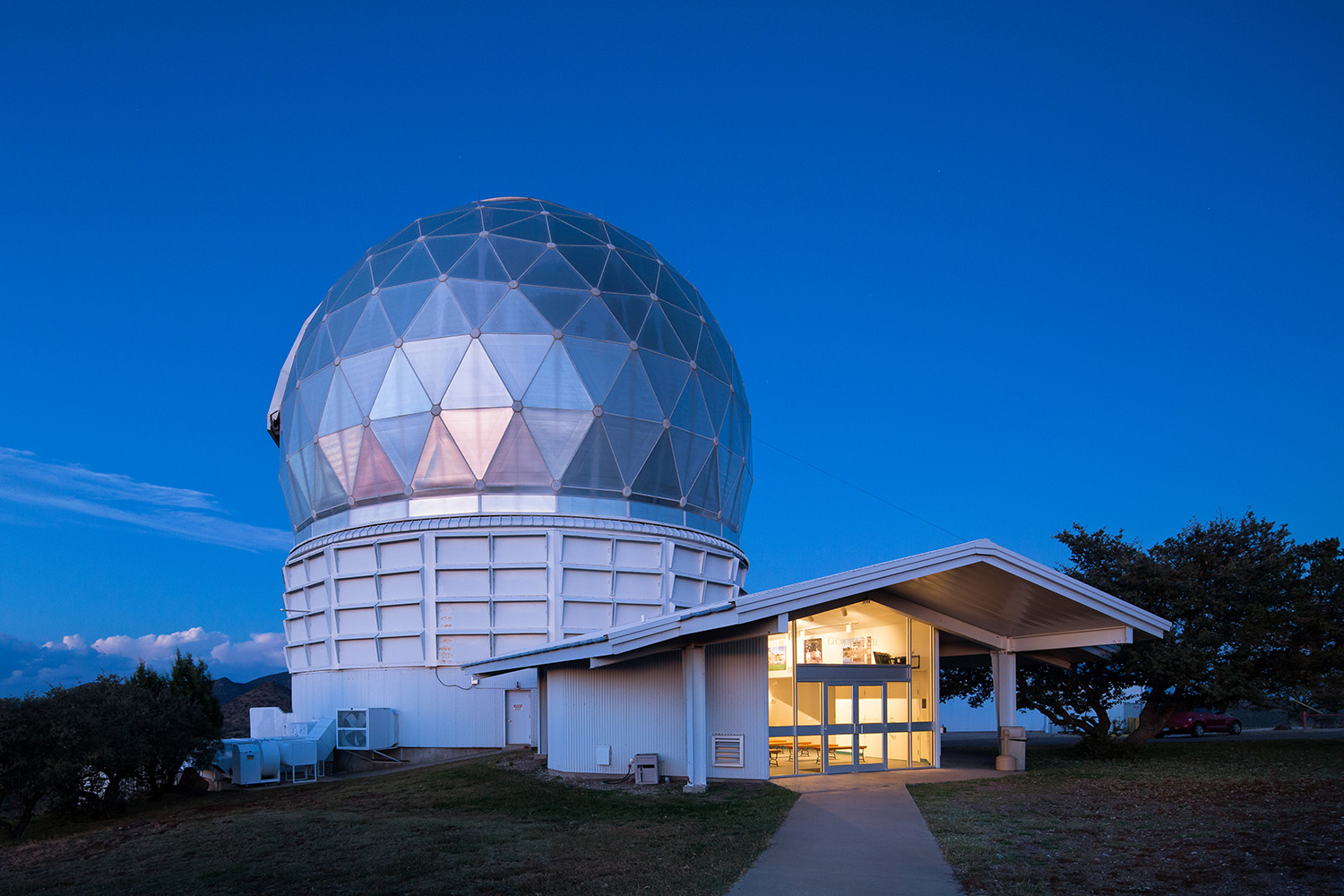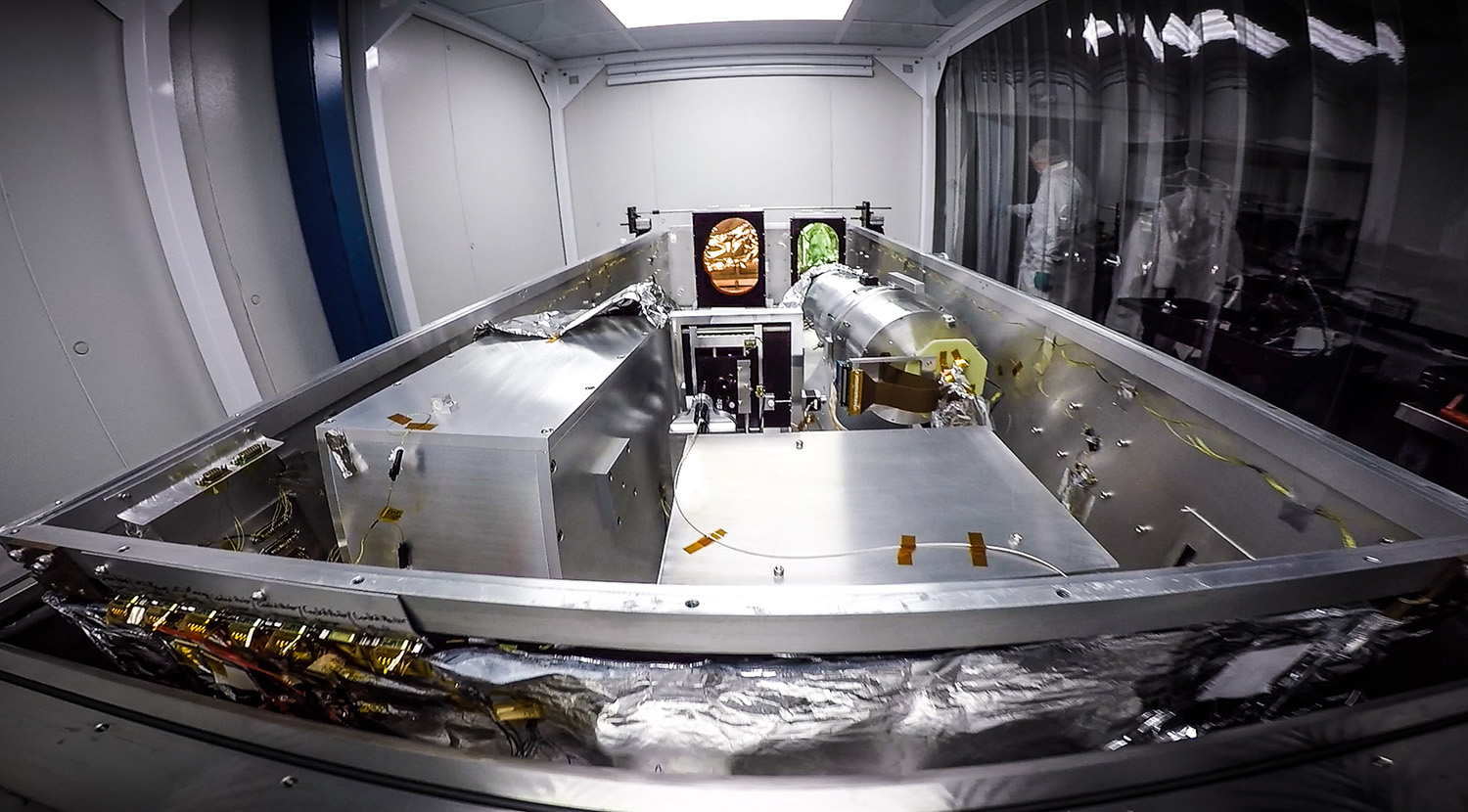The exciting new discovery, called G 9-40b, was validated using an astronomical spectrograph built by a Penn State team with the help of UNC-Chapel Hill’s Goodman Laboratory, led by Chris Clemens, stellar astrophysicist and senior associate dean for research and innovation in the College of Arts & Sciences.

A signal originally detected by the Kepler spacecraft has been validated as an exoplanet using the Habitable-zone Planet Finder (HPF), an astronomical spectrograph built by a Penn State team and recently installed on the 10m Hobby-Eberly Telescope at McDonald Observatory in Texas. UNC-Chapel Hill made important contributions to the HPF spectrograph.
The HPF provides the highest precision measurements to date of infrared signals from nearby low-mass stars, and astronomers used it to validate the candidate planet by excluding all possibilities of contaminating signals to very high level of probability. The details of the findings appear in the Astronomical Journal.
The planet, called G 9-40b, is about twice the size of the Earth, but likely closer in size to Neptune, and orbits its low mass host star, an M dwarf star, only 100 light years from Earth. Kepler detected the planet by observing a dip in the host star’s light as the planet crossed in front of — or transited — the star during its orbit, a trip completed every six Earth days.
This signal was then validated using precision spectroscopic observations from the HPF. Observations from other telescopes, including the 3.5m telescope at Apache Point Observatory and the 3m Shane Telescope at Lick Observatory, helped to confirm the identification.
“G 9-40b is amongst the top 20 closest transiting planets known, which makes this discovery really exciting,” said Guðmundur Stefánsson, lead author of the paper and a former Ph.D. student at Penn State who is currently a postdoctoral fellow at Princeton University. “Further, due to its large transit depth, G 9-40b is an excellent candidate exoplanet to study its atmospheric composition with future space telescopes.”

The HPF spectrograph required a custom diffractive optic that no commercial vendor was able to produce, so the project team turned to UNC-Chapel Hill’s Goodman Laboratory for Astronomical Instrumentation to provide this critical component.
“We specialize in producing enabling technological pieces for innovative instruments like the HPF,” Goodman Laboratory Director Chris Clemens said. “In this instrument, the lab produced an optic called a ‘cross-dispersing grism’ that increased the overall efficiency and performance of the instrument.”
Producing this prism required laser-recording a precise pattern of lines in optically sensitized gelatin to make what is called a volume holographic grating. There are not many options for making these at the size required for astronomical instruments, and in this case, the UNC lab was the only choice … and the price was right. Clemens, the senior associate dean for research and innovation and Jaroslav Folda Distinguished Professor of Physics and Astronomy in UNC’s College of Arts & Sciences, made the grating himself, over winter break, as a collaboration with the instrument team at Penn State.
“We only charged material costs. Gelatin, which comes from cows, is pretty cheap,” Clemens said. “I’m excited to see our technology deployed in this important exoplanet discovery.”

HPF was delivered to the 10m Hobby-Eberly Telescope at McDonald Observatory in late 2017 and started full science operations in late 2018. The instrument is designed to detect and characterize planets in the habitable-zone — the region around the star where a planet could sustain liquid water on its surface — around nearby low-mass stars.
“Using HPF, we are currently surveying the nearest low-mass stars — also called M-dwarfs, which are the most common stars in the galaxy — with the goal of discovering exoplanets in our stellar neighborhood,” said Suvrath Mahadevan, professor of astronomy and astrophysics at Penn State and principal investigator of the HPF spectrograph.
“It is exciting to see this first result of the HPF survey coming out. HPF was built from the ground up to enable precision measurements to discover and confirm planets,” added Larry Ramsey, emeritus professor of astronomy and astrophysics at Penn State.
This research was supported by the National Science Foundation, Penn State, the Heising-Simons Foundation, the NASA Earth and Space Science Fellowship program, the Center for Exoplanets and Habitable Worlds at Penn State and the Research Corporation.
The Hobby-Eberly Telescope is a joint project of the University of Texas at Austin, Penn State, Ludwig-Maximilians-Universität München and Georg-August Universität Gottingen.
A publicly accessible discussion of this result can also be found on the HPF blog.
Story by Penn State, with additional material from UNC’s College of Arts & Sciences
